Wattles - surprisingly diverse

The wattle is a quintessential Australian plant - instantly recognisable when in bloom from its fluffy little ball-shaped flowers. What is perhaps not so widely appreciated is the diversity within this plant group. There are close to 1,000 wattle species in Australia. We have 10 species on our 5ha block - Acacia longifolia, A. mearnsii, A. cognata, A. suaveolens, A. ulicifolia, A. verticillata, A. terminalis, A. obtusifolia, A. falciformis and A. implexa. They all differ quite substantially from one another in form - in the overall size of the plant, the shape of the leaves and the arrangement of flowers.
A. mearnsii (Late Black Wattle) and A. obtusifolia (Blunt Leaf Wattle) grow to be medium sized, erect trees at maturity. Some of our 14 year old plants are over 15m tall and their crowns approach the height of the smaller eucalypts. A. mearnsii is one of the diagnostic species for our type of forest - Lowland Gully Shrub Forest.
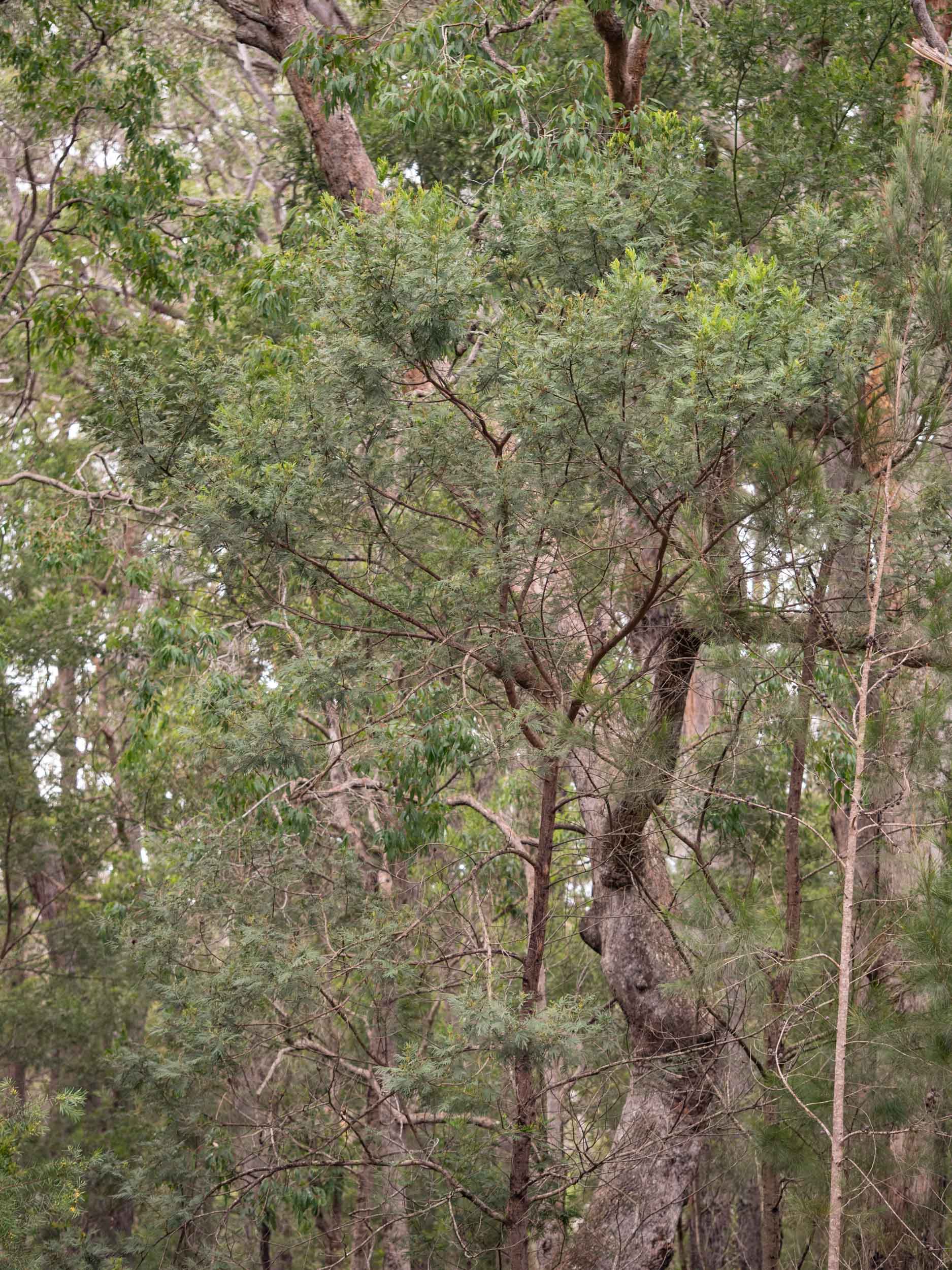
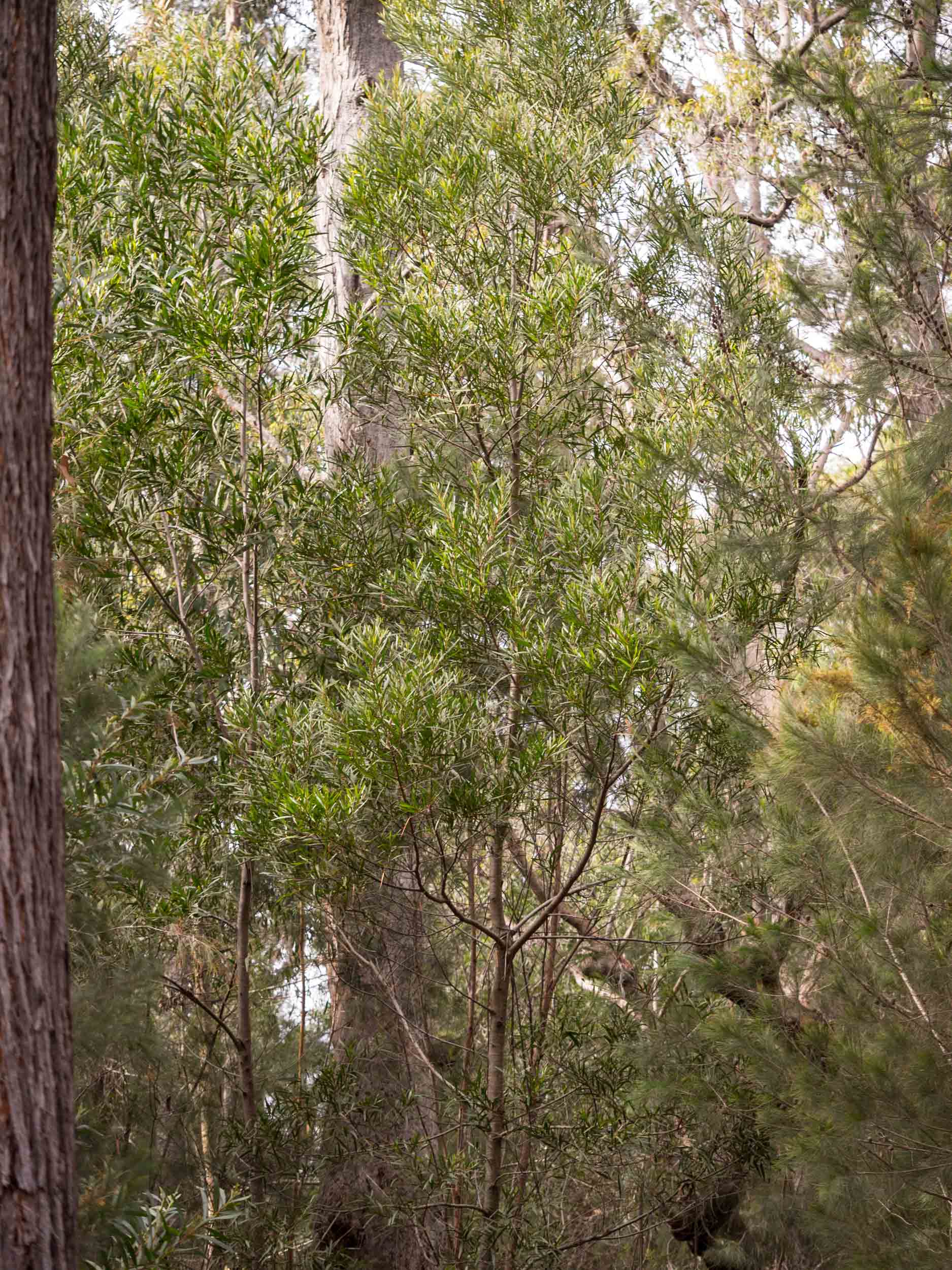
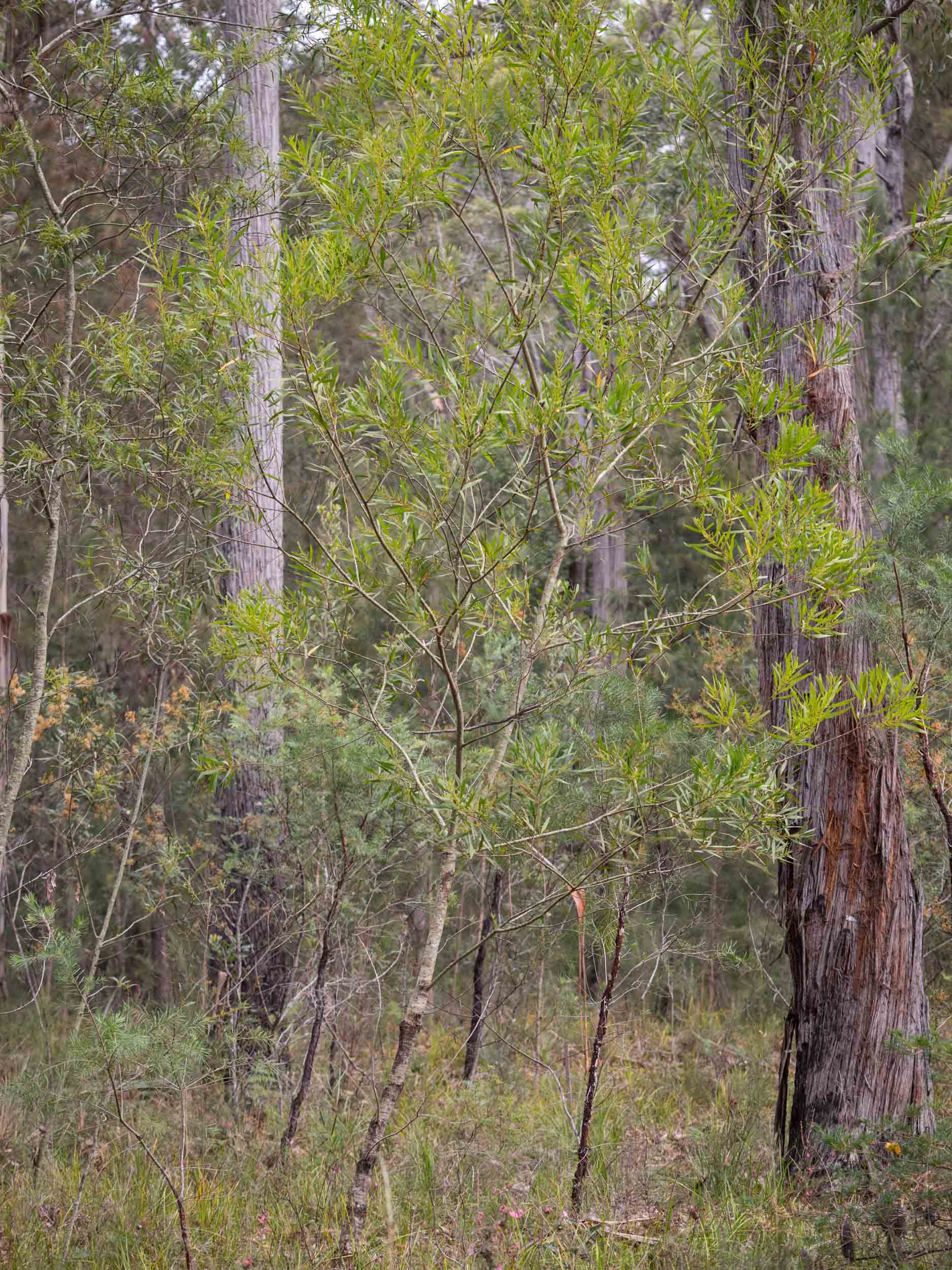

A. longifolia (Sydney Golden or Sallow Wattle), A. terminalis (Sunshine Wattle), A. cognata (Narrow-leaved Bower Wattle) and A. falciformis (Broad-leaved Hickory Wattle) are typically spindly, yet quite large shrubs - up to a few metres high. They form part of the middle storey of the forest. A. terminalis and A. longifolia can be pretty dodgy looking plants. The lower branches are usually devoid of leaves and the main trunk is often broken - damage inflicted by the beaks of Yellow-tailed Black Cockatoos as they search for grubs. Nonetheless, these wattles play important roles in the forest ecosystem. We examine some of the interactions between A. terminalis and a variety of animals in other blogs. A. longifolia is one of the diagnostic species for our type of forest - Lowland Gully Shrub Forest.
The rest of the wattles, A. ulicifolia (Prickly Moses), A. suaveolens (Sweet Wattle) and A. verticillata (Juniper Wattle) are medium sized bushes - up to a couple of meters tall. They contribute to the forest understorey.

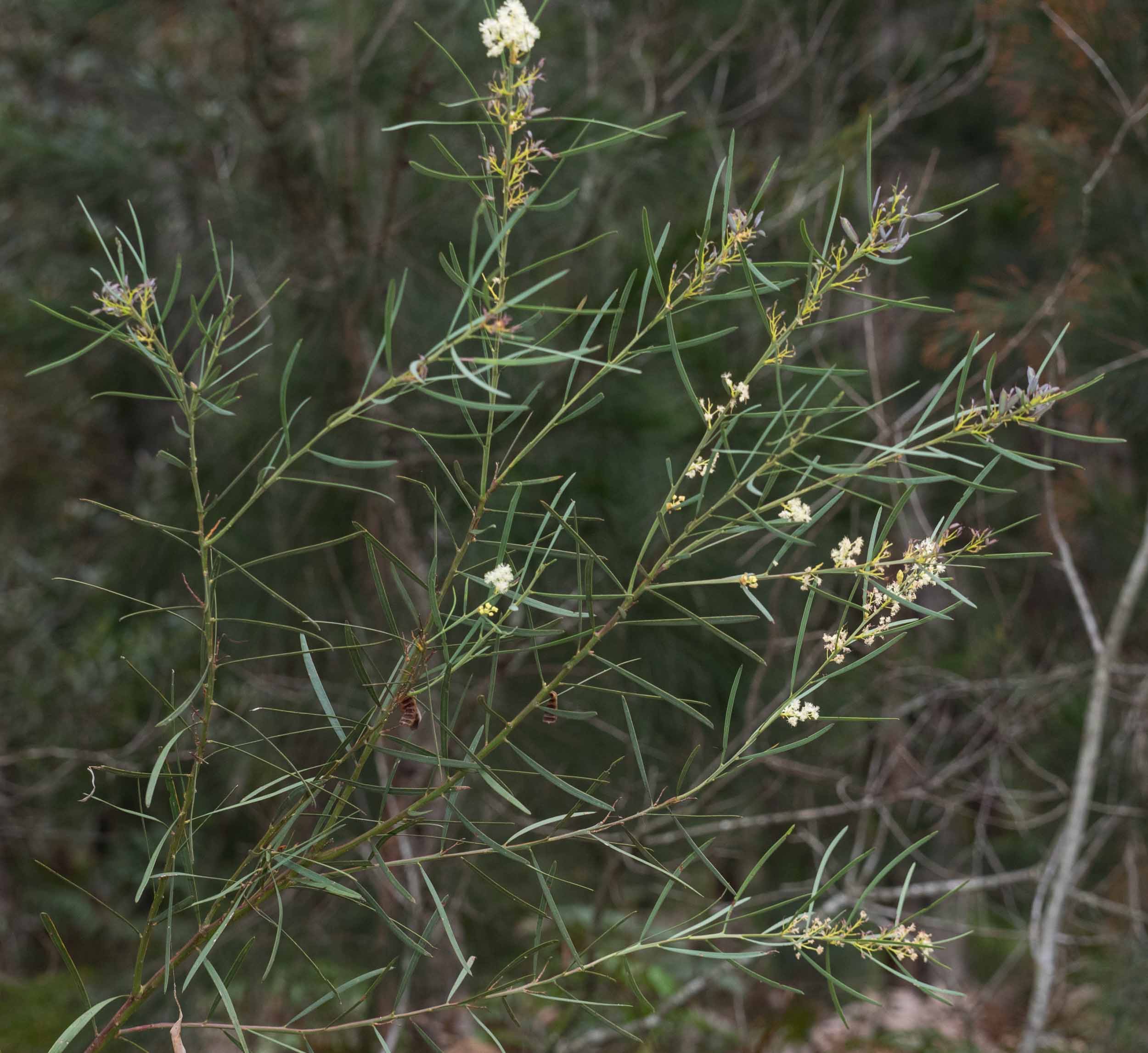
While all wattles show the same yellowish, globular-shaped flowers, the arrangement of the flowers in the inflorescence and their exact colour differs between species - from almost white to fluorescent yellow. This is displayed in the panel below, which also shows the time of the year when each of the wattle species on our block flowers.
As you can see, there is at least one wattle species in bloom at all times of the year - except for January and February. A. ulicifolia, A. suaveolens, A. terminalis, A. cognata and A. mearnsii all have individual, ball-shaped flowers, whereas the inflorescence of A. verticillata, A. obtusifolia and A. longifolia consists of a cylindrical spike of flowers.
Wattles also show great diversity in their leaf morphology. Some of our wattles have large, normal-looking leaves (A. falciformis, A. cognata, A. longifolia, A. obtusifolia).

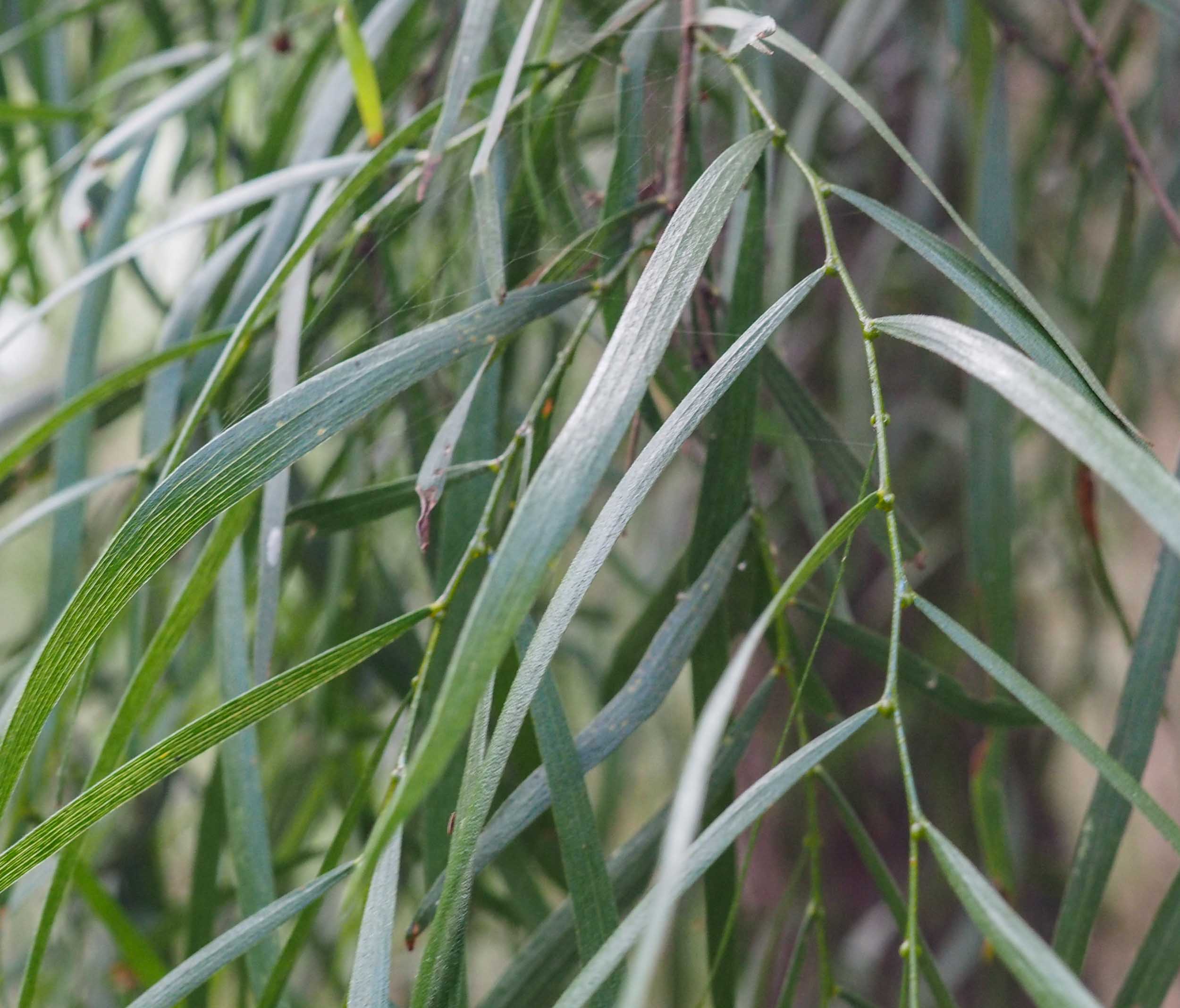
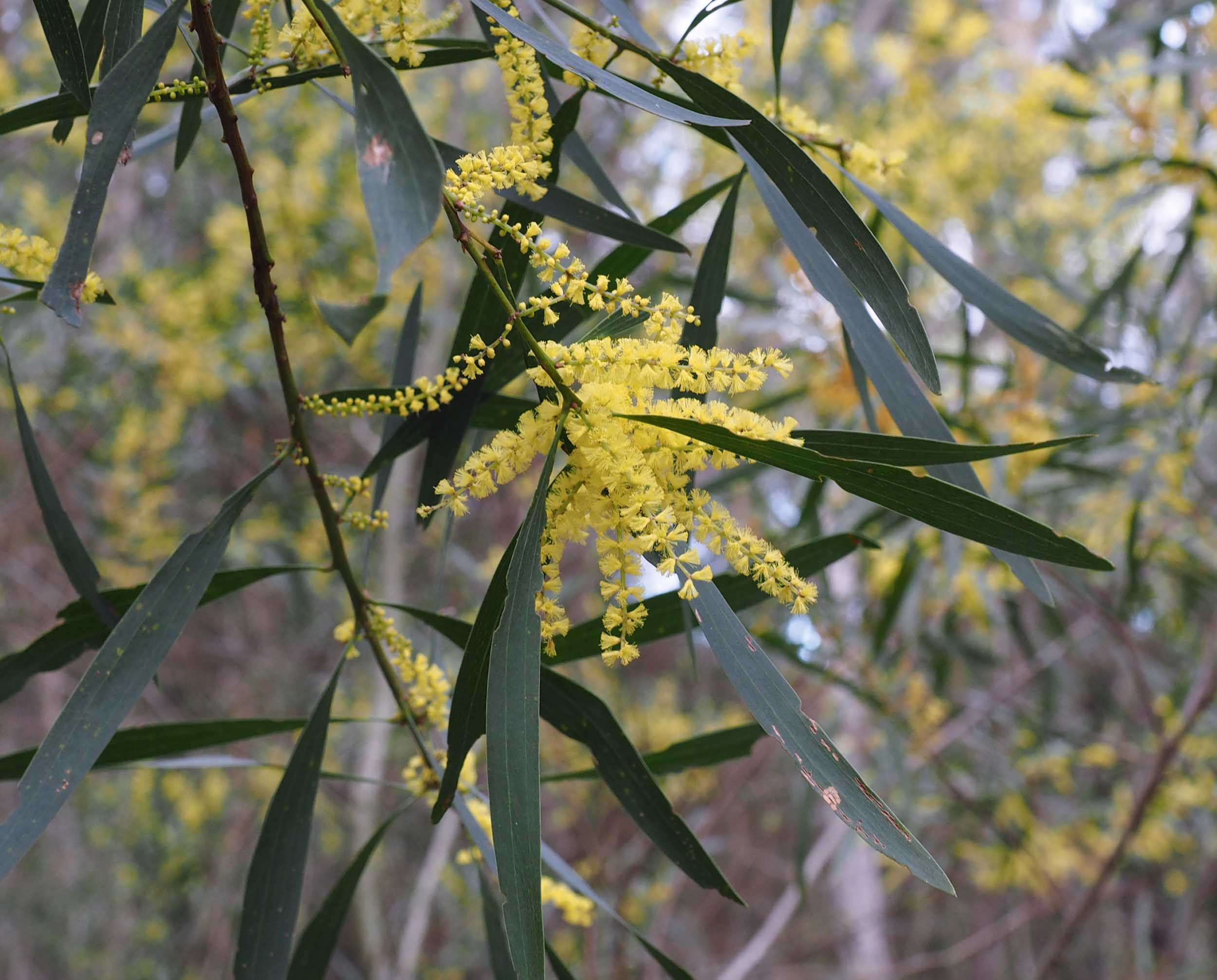
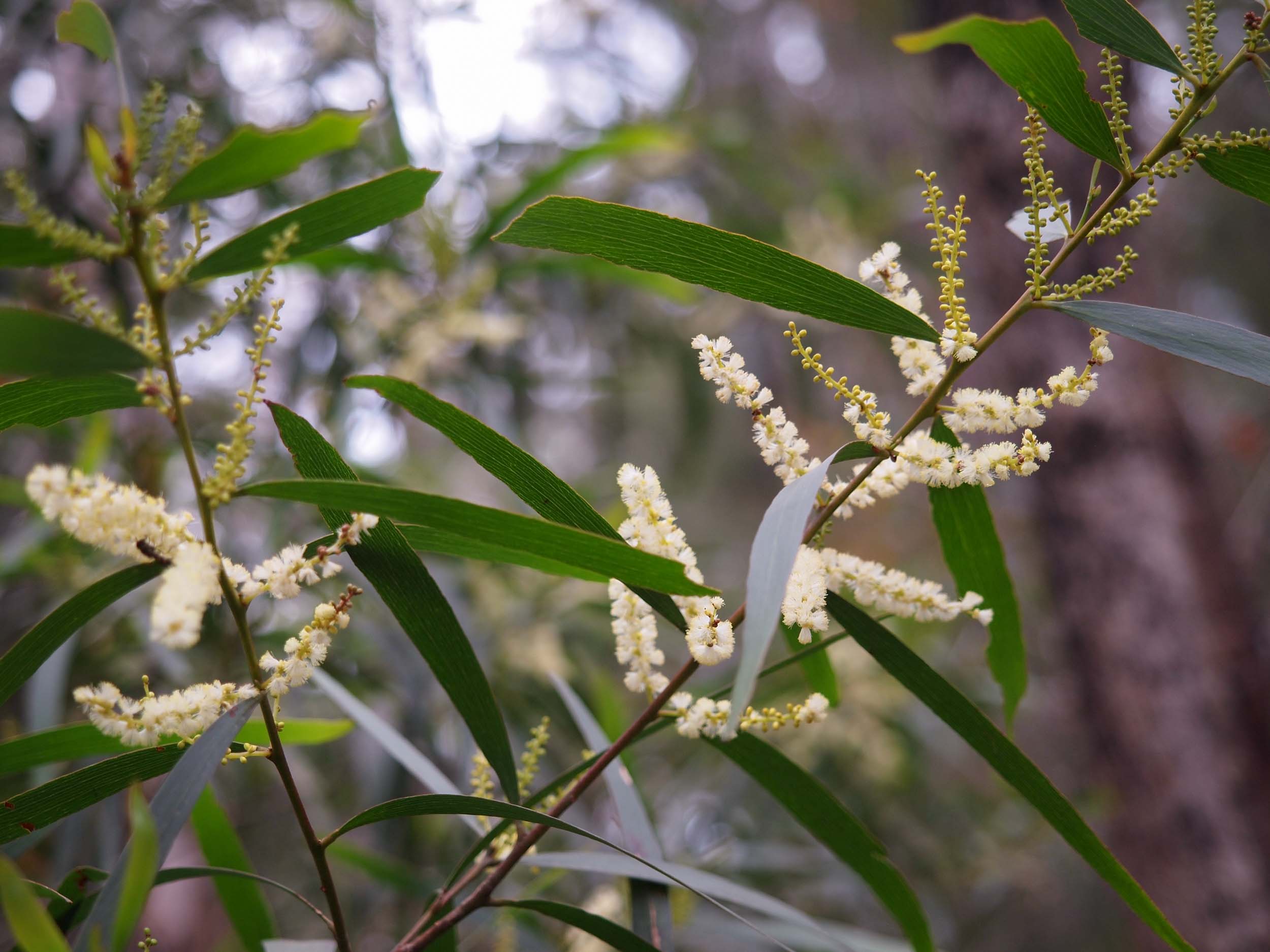
Others have narrow, spiky leaves (A. ulicifolia, A. verticillata).
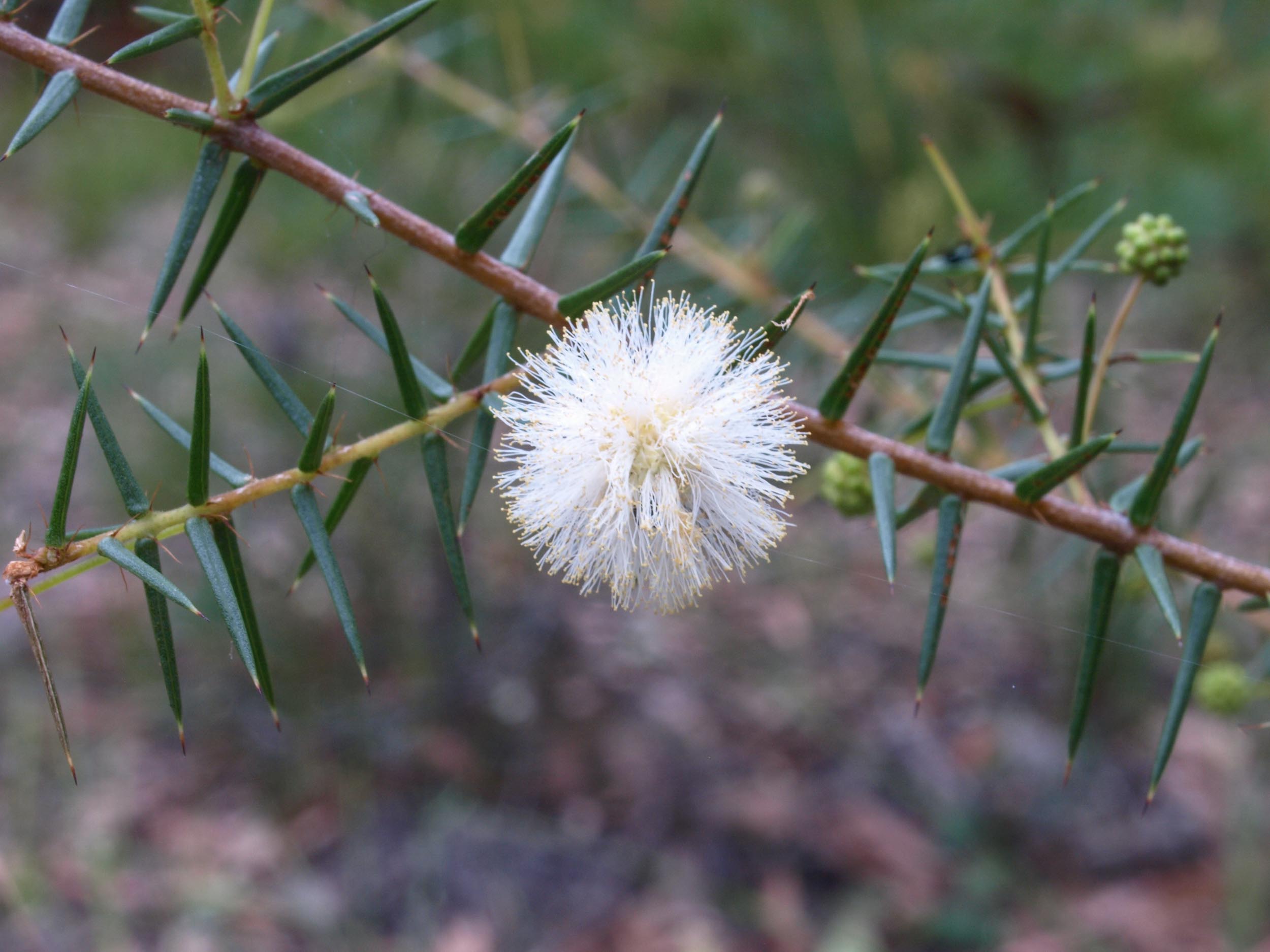

In two of our species - A. mearnsii and A. terminalis - the leaf is subdivided into small leaflets. These are the only two wattle species on our block that possess true leaves. In all of the other species, the 'leaf' is actually a flattened portion of the leaf stem - the leaf proper is replaced by this structure, called a phyllode.
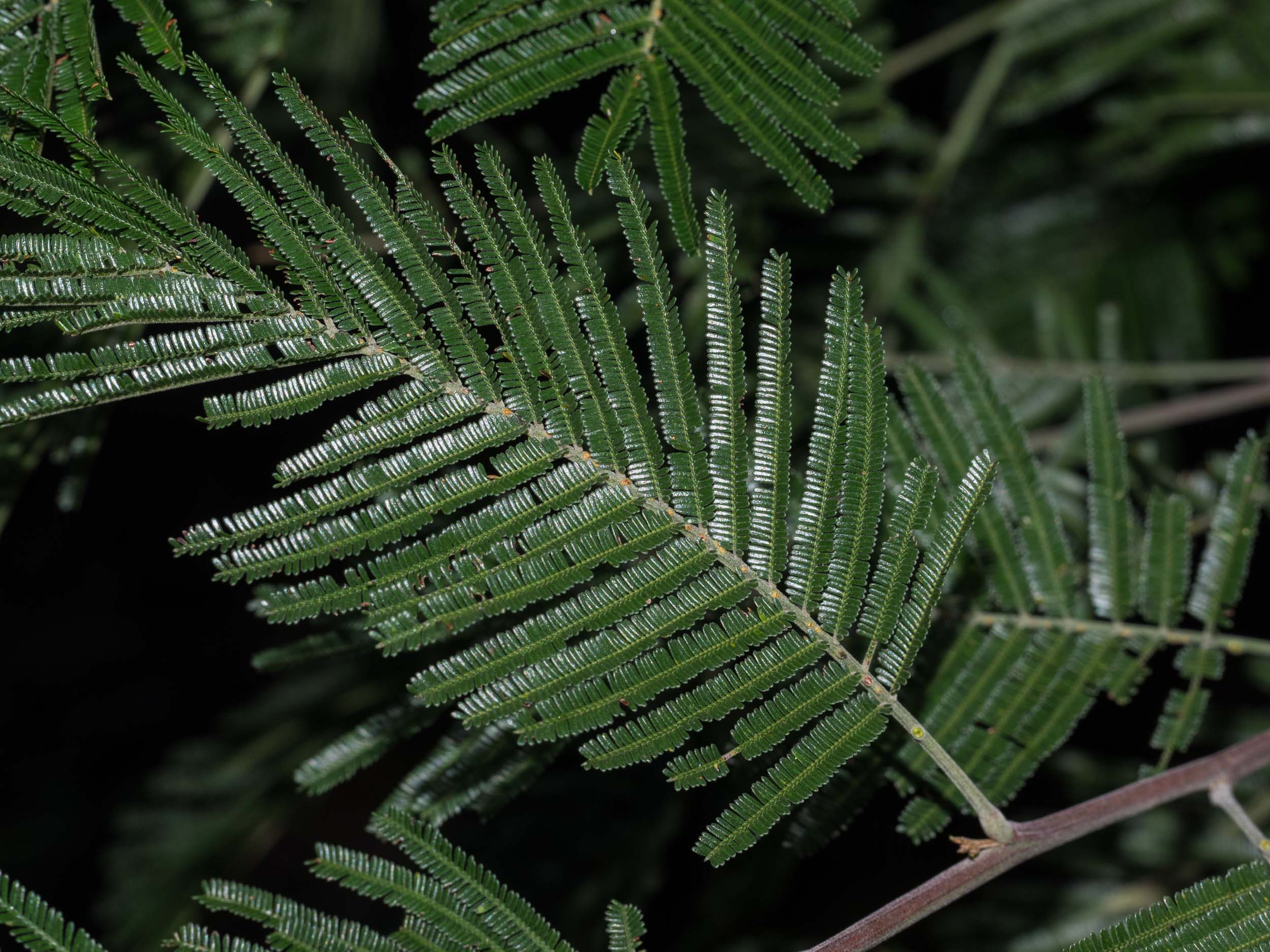
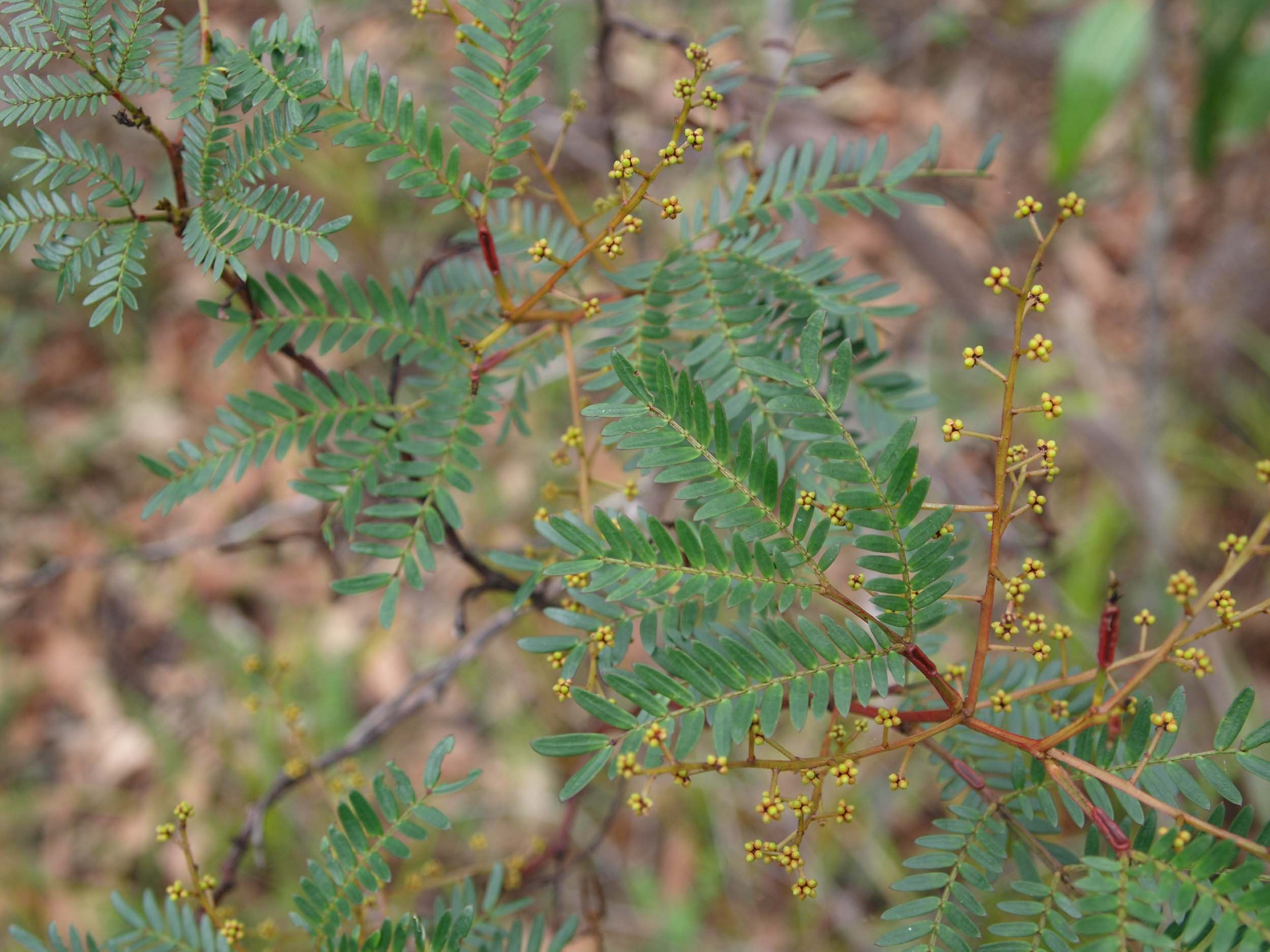
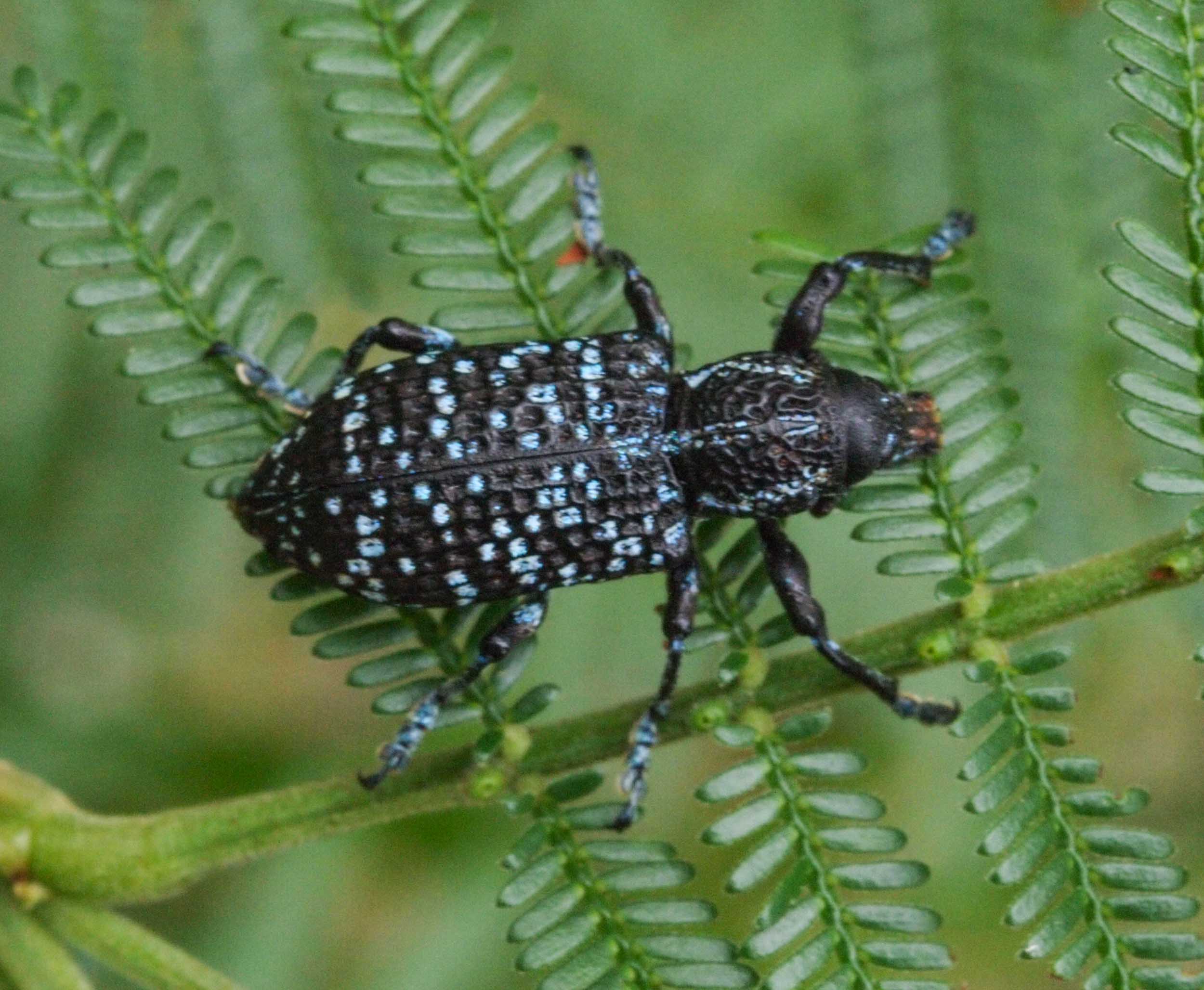
Wattles belong to the plant family Fabaceae, which includes the familiar edible peas and beans. This becomes obvious when we look at the fruit of wattles - they all look like beans!

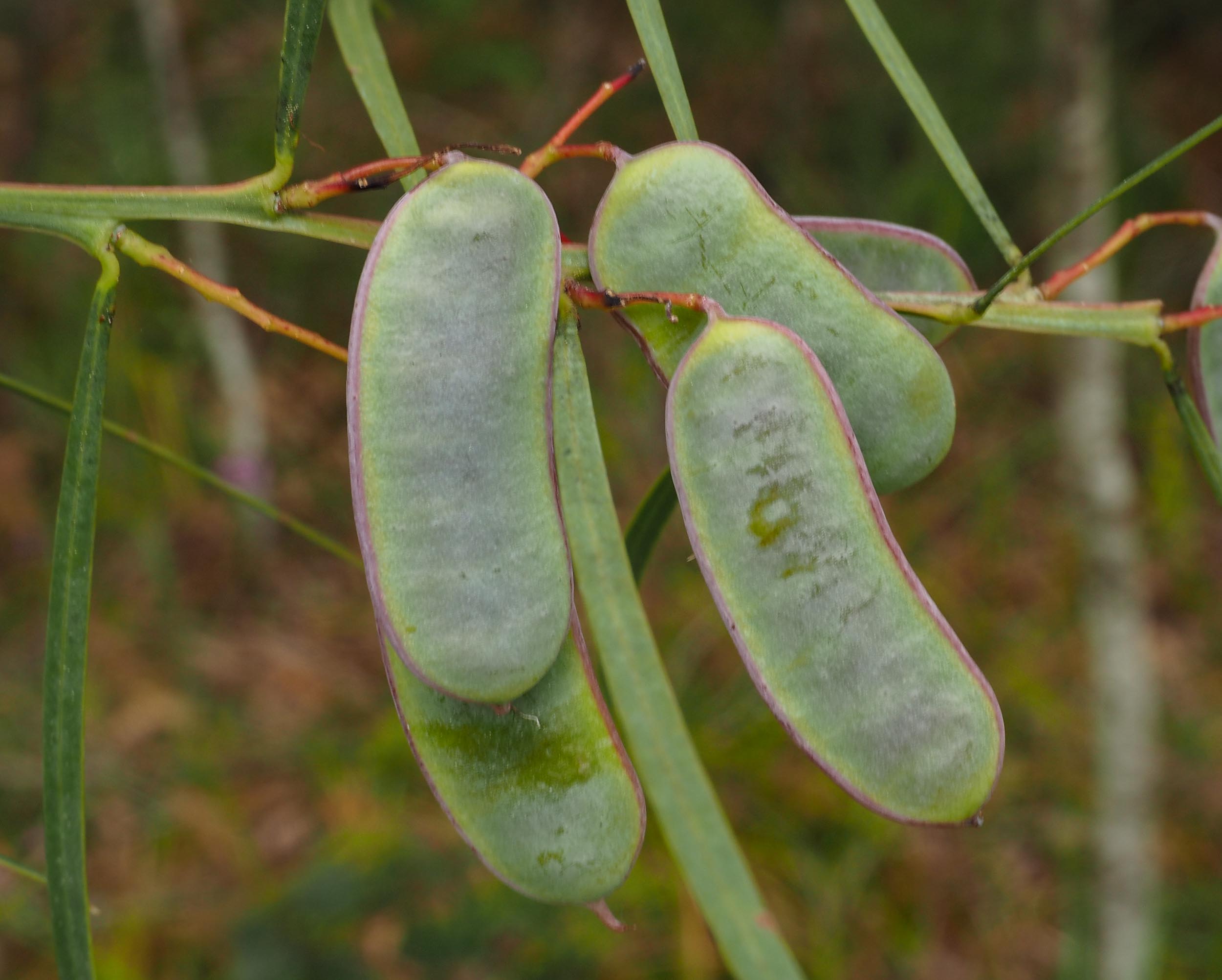
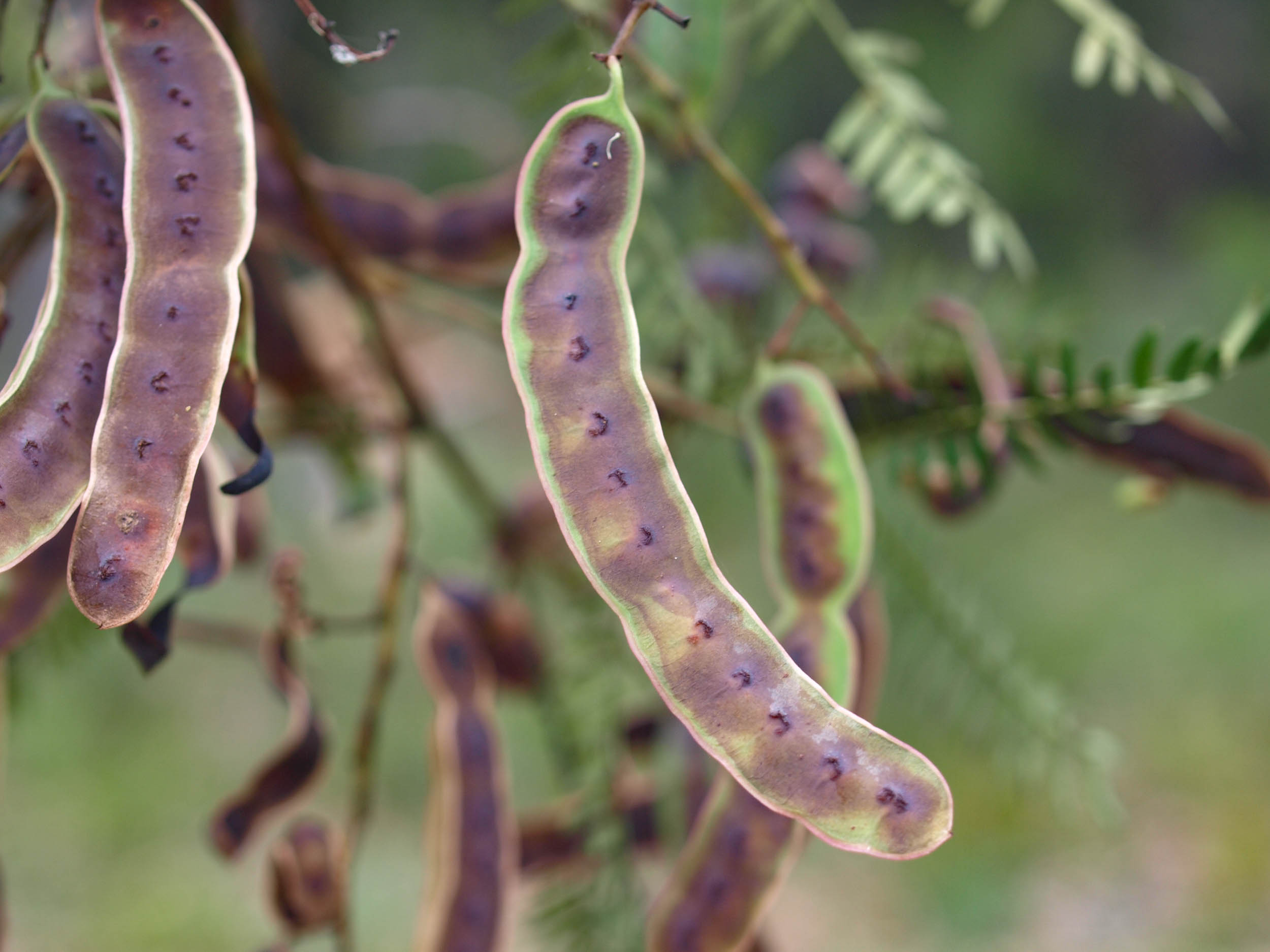
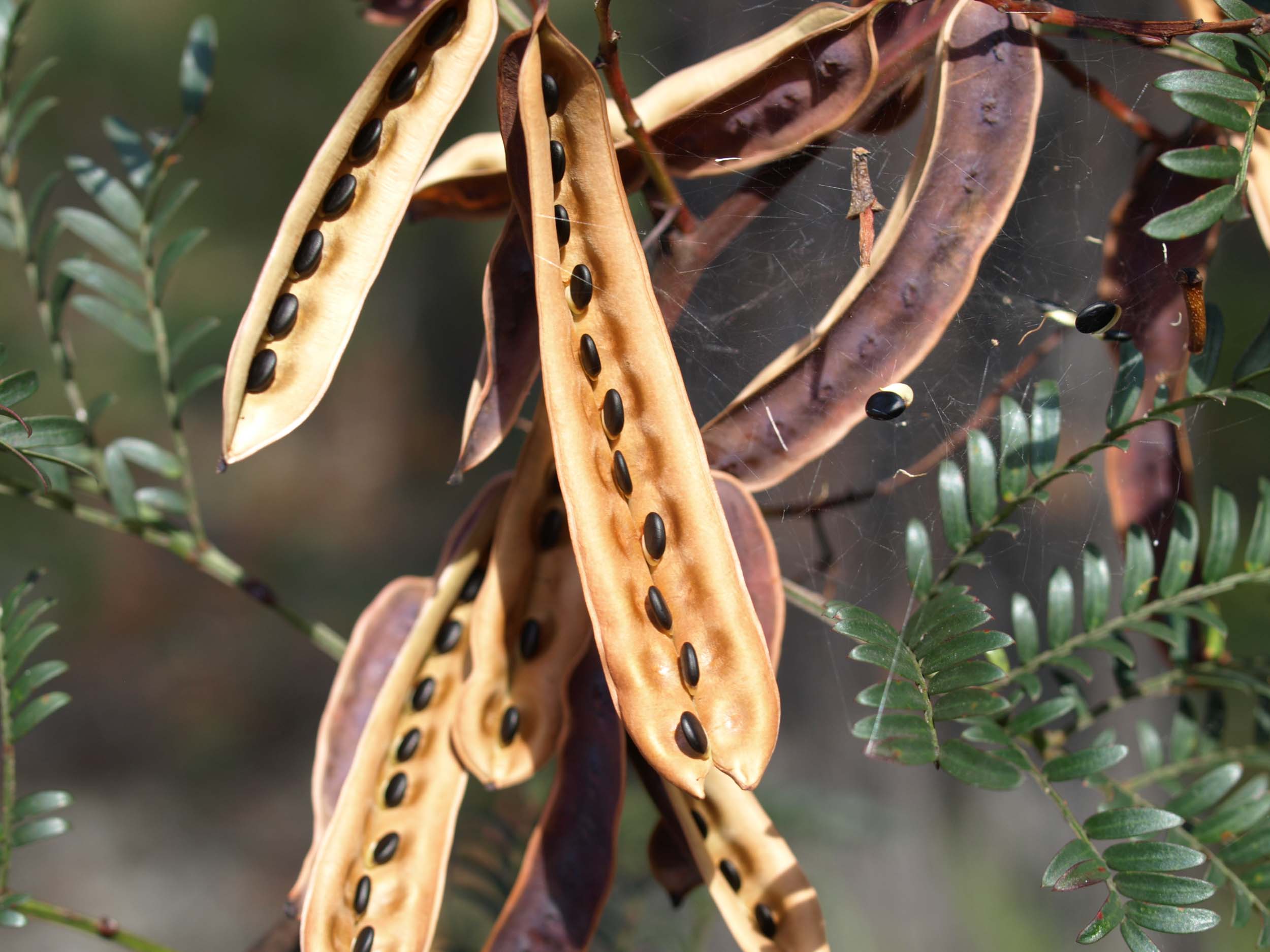
Just as beans make good food for us, wattle fruit is sought after by several native animals.
Male Gang-gang Cockatoo feasting on fruit of A. terminalis



